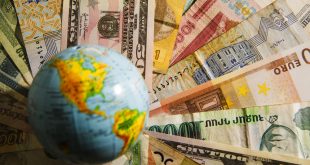Dubai TV interviewed Mohammed Hashad, Head of Research and Development at Noor Capital and a member of the American Society of Technical Analysts.
Let’s start with the U.S. labor market data, which came in mixed. How did the markets interpret it, and how did it reflect on the movement of currency baskets?
The data came in quite mixed, which led to a varied market reaction. However, overall, the U.S. dollar index saw a noticeable rise immediately after the release of the labor market data, but it didn’t stabilize above the 101 level. August data came in mixed as well, with the U.S. economy adding only 142,000 jobs, which is below the expectations of 160,000 jobs. The annual unemployment rate dropped to 4.2%. On the other hand, the average hourly wage increased by 0.4%, which is higher than expectations. I believe this data has strengthened market expectations that consumer spending will remain strong for a prolonged period due to the strength in wages, and this has, in turn, bolstered the likelihood that the Federal Reserve will only cut interest rates by 25 basis points at the next meeting. This was reflected in the FedWatch tool, where expectations of a 25 basis point cut reached 61%, compared to 39% for a 50 basis point cut. Overall, this data has benefited the dollar against a basket of currencies, various commodities, and even the stock market.
In the oil sector, there seems to be a disregard for OPEC+’s decision to extend production cuts, as we have seen five consecutive sessions of declines. Why these declines?
Oil futures prices have significantly widened their losses, dropping to their lowest level since June of last year. Losses exceeded 2.5%, approaching the $67 per barrel level. The acceleration of the decline came against the backdrop of demand concerns, or a reduction in demand, from the world’s largest energy consumer, the United States, along with hints of the U.S. economy potentially entering a recession, and the release of poor data from China showing a decline in manufacturing activity, further exacerbating demand concerns. These developments coincided with Saudi Arabia’s announcement of reducing the price premium for its sales to the Asian market, which also heightened demand fears. However, during mid-European trading sessions, we observed attempts at recovery due to some news about the possibility of a hurricane striking the U.S. Gulf, responsible for 60% of refining capacity.
This week is packed with significant economic data. Let’s talk about that, in addition to the U.S. data we mentioned, especially those coming from the Eurozone.
We are expecting the Eurozone’s monetary policy statement from the European Central Bank, along with its press conference. From England, we await the unemployment claims and monthly GDP data. The most critical data, however, comes from the U.S., particularly the inflation numbers, including both the Consumer Price Index (CPI) and Producer Price Index (PPI).
Gold is also awaiting these upcoming U.S. data, which is why it has been moving within a narrow range, despite slight declines. Is this a reaction to the dollar’s movement, or merely anticipation of interest rate directions?
There are many factors influencing gold prices, the most important of which is its staying below the $2,500 per ounce level, reaching $2,485. I believe gold may move sideways during this week’s trading until the U.S. inflation data is released, as it will greatly clarify the extent and pace of interest rate cuts. I believe all scenarios are on the table, and we are waiting for central banks’ decisions, except for the Reserve Bank of New Zealand. I think all central banks are heading toward cutting interest rates, which could ultimately benefit gold.
.
 Noor Trends News, Technical Analysis, Educational Tools and Recommendations
Noor Trends News, Technical Analysis, Educational Tools and Recommendations




